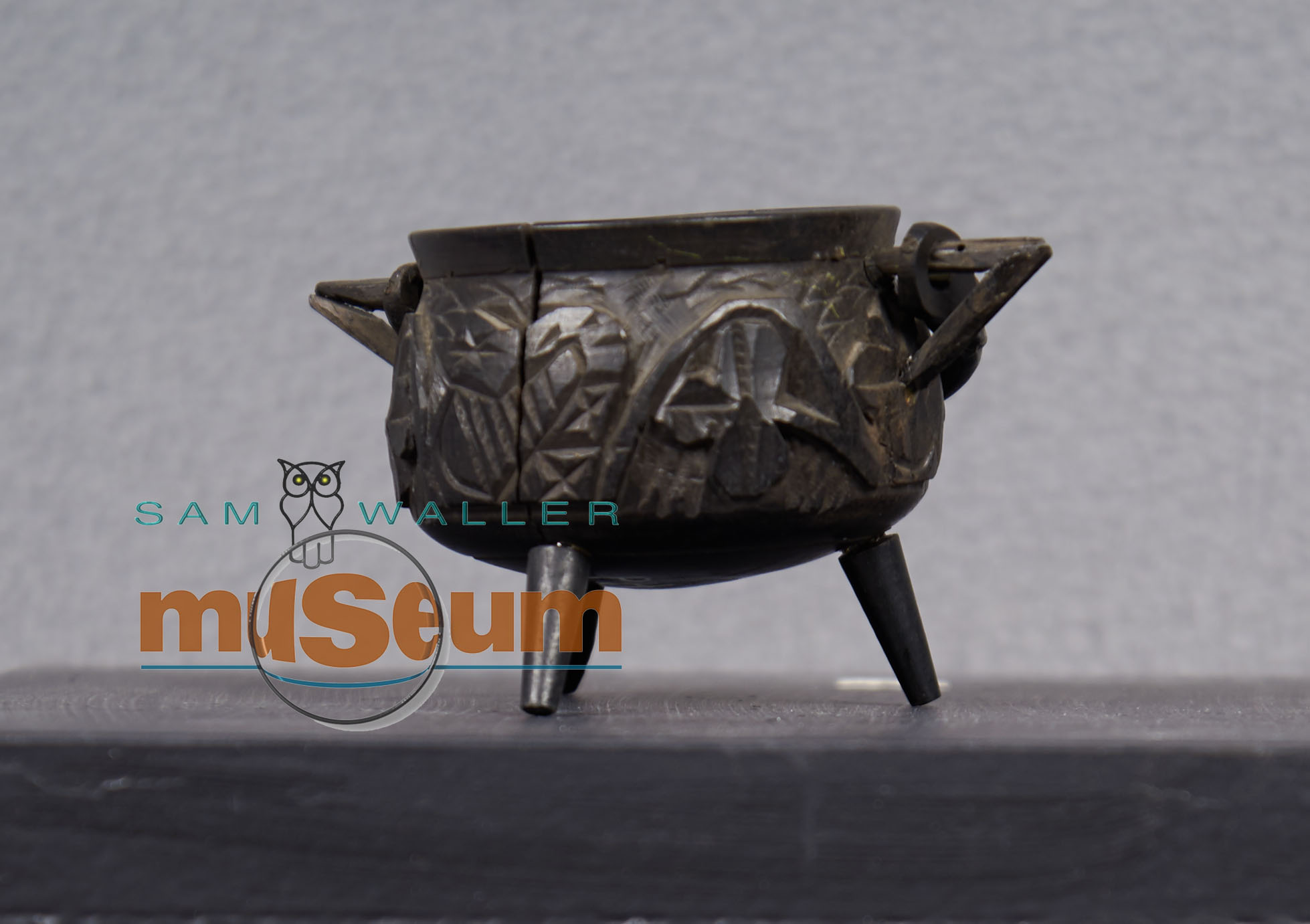This object is a small, decorative cauldron, including with a handle, which may originally have been a candle holder. It seems to have originally been made of various pieces which have been attached. It is made out of bog oak, oak wood that has lain in peat. Because peat has a very low oxygen levels, organic material does not decompose completely. Various ancient human bodies, called bog bodies, have been found in northern Europe with their skin and various internal organs intact, but their skeletons dissolved in the acidic water of the peat. The effect of the bog on the wood is to make it turn a much darker colour. The longer it is in the peat and acidic water, the darker the colour will become. To acquire a black colour, bog oak must be submerged between 3,500 to 5,000 years. Bog oak is some of the rarest timber in the world and is in the first stages of fossilisation. In Ireland, bog oak is also called morta. The carvings on our small bog oak caldron indicate that it may have been found in Ireland, which is a possibility since bog oak can be found there.
Two of the symbols on the cauldron have become symbols of Ireland, the harp and the shamrock. Legend says that in the 5th century, St. Patrick, the patron saint of Ireland, used a shamrock to explain the Christian teaching of the Holy Trinity, to the people of Ireland. Though there is no definitive evidence to support this theory the belief has persisted. The shamrock is found at the base of Canada’s coat of arms, to represent Ireland. The harp, especially the Celtic harp, has also become a well-known Irish symbol, appearing on the coat of arms of Ireland. One of the oldest modern harps in the world, if not the oldest, is known as the Trinity College Harp as it is displayed there. It has been dated to the 14th or 15th century and was used as a model for the coat of arms, on the Irish one euro coins, and the Guinness brand of alcohol. However; though it is a symbol of Ireland, the harp is thought to have originally been constructed in Scotland. The other symbol on the cauldron might represent an Irish round tower, early medieval stone towers found mostly in Ireland near monasteries. There are sixty-five towers of various levels of completeness found around Ireland.
This artefact is preserved as part of the original Sam Waller collection.


